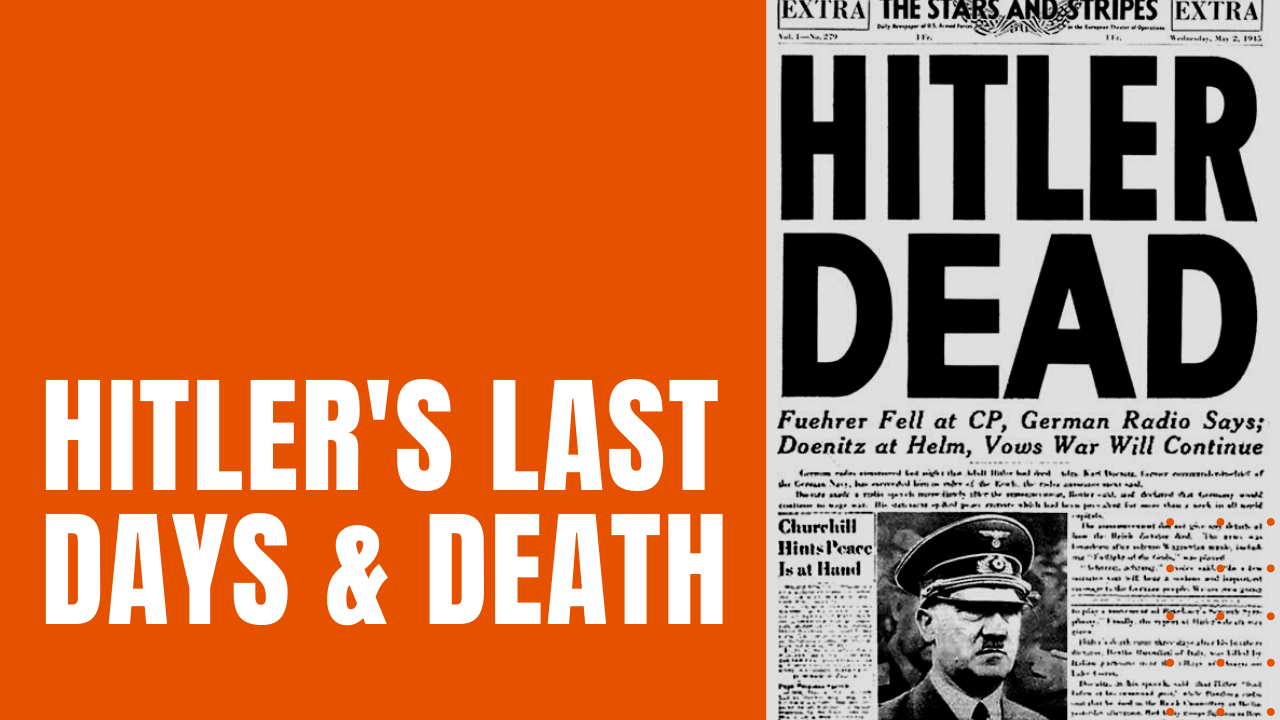Hitler’s Last Days: How did Adolf Hitler Die?

The downfall of Nazi Germany
By early 1945, Nazi Germany was on the verge of total military collapse. Poland had fallen to the advancing Soviet Red Army, which was preparing to cross the Oder River between Kustrin and Frankfurt-an-der-Oder with the objective of capturing Berlin 51 miles to the west. German forces had recently lost to the Allies in the Ardennes Offensive in France, while British and Canadian forces were crossing the Rhine into the German industrial heartland of the Ruhr.
U.S. forces in the south had captured Lorraine and were advancing towards Mainz, Mannheim and the Rhine. German forces in Italy were withdrawing northward, as they were pressed by the Allies as part of the Spring Offensive to advance across the Po and into the foothills of the Alps. In a nutshell, Germany’s war efforts were in a state of endgame.
The downfall of Adolf Hitler
During an afternoon situation conference on April 22nd, Hitler suffered a total nervous breakdown when he was informed that the orders he had issued the previous day for an all-out counteroffensive had not been obeyed, leading Hitler to confess for the first time that Germany’s war of aggression had finally been lost.
Hitler then announced that he would stay in Berlin until the bitter end, taking his own life before the Allies could capture him alive. Luftwaffe chief Reichsmarschall Hermann Göring learned about Hitler’s suicide pact and sent a telegram to Hitler asking for permission to take over the leadership of the Reich in accordance with Hitler’s 1941 decree naming him as his successor.
Hitler’s secretary, Martin Bormann, convinced Hitler that Göring was staging a coup, prompting Hitler to inform Göring that he would be executed immediately if he failed to surrender all of his posts. On April 28th, Hitler received a BBC report originating from Reuters, stating that Reichsfuhrer Heinrich Himmler had offered Germany’s surrender to the advancing Allied armies, which further threw Hitler into an inconsolable rage.
He ordered Himmler’s immediate arrest, before executing Himmler’s SS representative, Hermann Fegelein. During Fegelein’s execution by firing squad, the Red Army breached Berlin’s defensives as far as the Potsdamer Platz, and all indications were that they were preparing to storm the Chancellery. This report and Himmler’s treachery prompted Hitler to make the final decisions of his life.
How did Hitler Die?
Shortly after midnight on April 29th, he married longtime girlfriend Eva Braun in a small civil ceremony in the map room of his bunker. Hitler then hosted a modest wedding breakfast with his new wife, before taking secretary Traudl Junge to another room to dictate his last will and testament.
The following day, Hitler appeared in a bunker corridor to offer his final farewell to about twenty assembled people, most of them women, shaking hands with each of them before retiring to his quarters for the final moments of his life. Hitler chose a “pistol-and-poison method,” which was suggested by his physician, while Ava Braun chose cyanide poison alone. Per Hitler’s orders, both of their bodies were dragged into a garden outside the bunker, doused in gasoline and set on fire.
Records in the Soviet archives show that their burned remains were recovered and interred in successive locations until 1946, only to be exhumed yet again in 1970, so that their cremated remains could be scattered to an uncaring wind.
